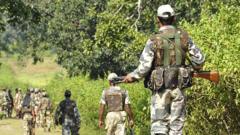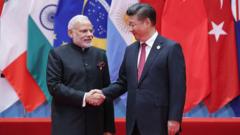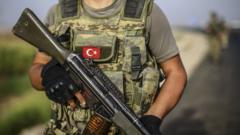Nambala Keshava Rao, a top leader of the Communist Party of India (Maoist), was killed during a clash with security forces in Chhattisgarh. This event comes as part of a broader government crackdown on Maoist insurgents, with a commitment to end the rebellion by March 2026.
Major Maoist Leader Eliminated in Chhattisgarh as Government Intensifies Operations

Major Maoist Leader Eliminated in Chhattisgarh as Government Intensifies Operations
In a significant development, Indian security forces have successfully killed a prominent Maoist leader, marking a turning point in the decades-long insurgency in the region.
In a major breakthrough against Maoist insurgents, Indian security forces have killed a top leader, Nambala Keshava Rao, also known by the alias Basavaraju, during a firefight in Chhattisgarh. This incident, which resulted in the deaths of 27 rebels and one police officer, was confirmed by Indian Home Minister Amit Shah. Notably, this is the most high-profile kill in three decades, as Rao held a senior position within the banned Communist Party of India (Maoist) and was on the National Investigation Agency's most-wanted list.
The fighting erupted in Narayanpur district following intelligence reports that senior Maoist figures were in the area. Prime Minister Narendra Modi expressed pride in the security forces' accomplishment via a post on X. However, the Communist Party of India condemned the killings and demanded an independent inquiry.
This operation emerged after the launch of a substantial military campaign termed "Black Forest," aimed at dismantling Maoist strongholds across Chhattisgarh, Telangana, and Maharashtra. Shah reported that 54 Maoists have been arrested and 84 have surrendered during these operations. The Maoists had previously expressed their willingness to engage in talks; however, Chhattisgarh officials stated that any dialogue must occur without conditions.
The Maoist insurgency has its roots in the late 1960s, beginning in West Bengal, and has expanded across numerous districts in India, particularly along a "red corridor" from northeast to central India. While increased military operations have reduced violence levels, clashes still result in significant casualties each year, reaffirming the challenge that remains for Indian authorities. The government attributed the deaths of approximately 287 rebels last year mainly to security crackdowns, with over 10,000 lives lost since the conflict began.




















